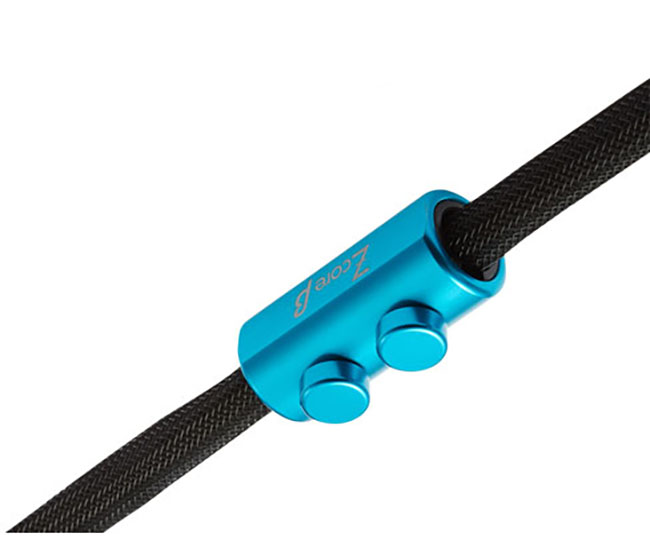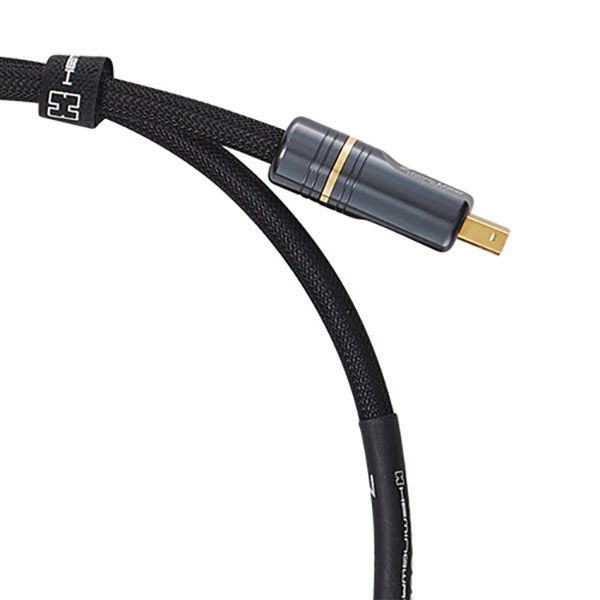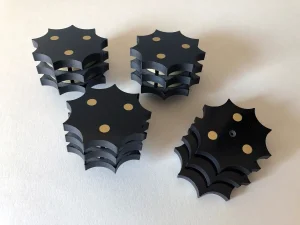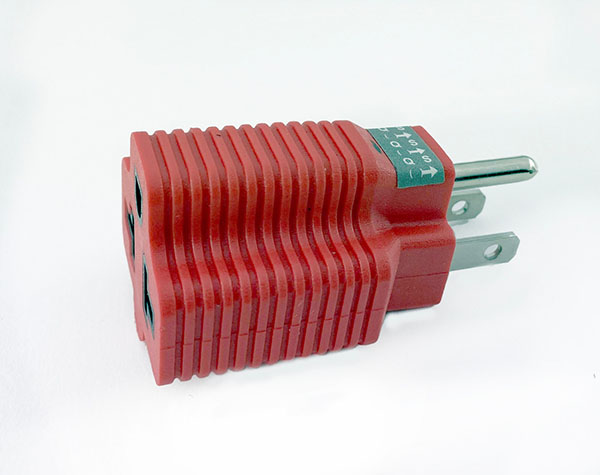Most Wanted 2022 page 3



Cardas Clear Beyond Interconnects and Speaker Cables (Interconnects 1M $4250, Speaker Cables 2M $9220): Cardas’ flagship, Clear Beyond, use its best design and materials. Clear Beyond’s defining characteristics are musicality and balance. I found no area exaggerated or diminished, regardless of what components I paired them with. Pleased with the performance of Clear Beyond speaker cables, I decided to upgrade my 5.5M XLR interconnects to Clear Beyond. The improvement in bass and midrange performance was noticeable from the first notes. But it wasn’t until 150 hours later when, during a listening session, I suddenly realized my system had never sounded better. I sat there with a huge smile, thinking wow, my audio buddies need to hear this. (Don Shaulis)


DR Acoustics Classe’ Delta Cables (PowerMate Power Cords, $795.00; Delta XLR Interconnects, $2,995/pr; Delta RCA Interconnects, $2,995/pr; Delta Digital Interconnect Cable, $1,795.00; Delta Speaker Cables $2,995/pr): After a strong recommendation from former Classe’ Audio Chief, Dave Nauber, I arranged to have a suite of these cables sent to me by brilliant cable designer Daniel Robidoux. Boy, am I glad I did. These cables are a synergistic match with the Classe’ Audio gear that is the anchor of my current reference system. DR Acoustics uses only the highest quality connectors and wires throughout its entire product line, and the quality of design and construction is first-rate. My reference system was already well-balanced and natural sounding, especially on my favorite live jazz recordings. But the DR Acoustics cables elevate my enjoyment of music to another level. If you’re unfamiliar with this brand, do yourself a favor and seek them out. These cables are spectacular. (Dave Thomas)

DR Acoustics Antigone 2.0 Power Management System ($5995): While the DR Acoustics cables elevated the sound of music through my reference system, the Antigone elevated the performance of my equipment. My components’ improved power and reduced vibration translated into greater power and speed. According to designer Daniel Robidoux, Antigone uses three separate patented Quartz/Bitumen emulsion Filters that contribute to eliminating electromechanical noise and EMI and RFI. There are no electronic parts. The result is a non-current limiting power processor. Vibration is controlled via something called ASSISTS (Assembly Sub System Integrated Trapeze Support). These specially developed decouplers ensure no remaining vibrations can be transferred to the casing or to the rest of the subsystem. Increased power and speed mean a darker soundstage background and a better definition of vocals and instruments. (Dave Thomas)


Hemingway Audio Z-core Beta Cables (Interconnect 1.5M $7800, Speaker Cables 3M $14K, Power Cords 2M $4800 – reviewed here): This Korean-based company makes some of the best-sounding cables available. It was incredibly gratifying to find that ten years after my review of Hemingway Audio cable, and spending all of those years telling anyone who asked me that I thought they were the best cables I had heard, to discover that their cables are still outstanding performers. The Z-core Beta Series cables possess an uncannily musical sound with an airy dimensionality that reveals a lifelike realism to everything played through them. They also sound detailed and have wonderful tonal characteristics, with an extended bottom end that is neither too tight nor too full but sounds just right. The Z-core Betas do a magical job of helping to make vocalists and solo piano sound magically palpable and present in my listening environment. (Mike Wright)

Hemmingway Z-Core Sigma Power Cords ($13,750): I have lived with the Hemingway Creation Power Cords for over ten years. I was convinced they would be the last audio power cords I would use in my system. They were just that good, and I could not imagine anything better. Since I’ve been an audiophile for over 40+ years, I should know better than to feel that way. Along comes the new Hemingway Z-Core Series. The Hemingway Serie Power Cords are broken down into Alpha, Beta, Sigma, and top-of-the-line Omega. I originally auditioned for the $7,800 Beta series, and oh my GOD, the Beta ran circles around my previous power cords. Stepping up my game to the Hemingway Sigma was an eye-opener as these power cords are in a league of their own; the transmission of signals was without traceability; the signal travels as if it were transmitted in the air. The signal travels freely, without any coercion or resistance. These cables are incredibly neutral and allow you to hear exactly what your system is doing. In other words, they get out of the way and allow you to hear what’s downstream and upstream. Yes, the Hemingway cables are expensive; however, you get the sound you pay for in the audio world. (Moreno Mitchell)

Hemingway Audio Z-Core USB cable ($3,200.00/1.5 meter): Simply put, the Hemingway Z-Core USB cable is music to my ears. Listening to Melody Gardot from her outstanding recording of the Rain from her “My One and Only Thrill. I was stunned by the intense level of purity, immediacy, and solidity of her seductive voice. The cable took my reference system up a notch. Yes, the Hemingway Audio Z-Core USB is quite expensive but to me it’s worth every penny. It’s that good! Review in the works. (Key Kim)


NanoFlo Superconductor Holographic 3D6 AC cord ($4000 ea – reviewed here): Having inserted the NanoFlo throughout my system, I’m astounded by their sonic excellence in the areas of speed, dynamics, quiet, and noise reduction. Especially powerful when added at my Puritan AC conditioner and somewhat less powerful when added to front-end components. (follow-up in the works – Clement Perry)
NanoFlo Superconductor Holographic 3D6 AC cord ($4000 ea – reviewed here): With the NanoFlo Superconductor Holographic 3D6 AC Cord inserted in Clement’s system, it took but one song to describe what I was hearing. That first song and the 20+ that followed sounded vastly different from those I’d heard during my recent visits to Chez Perry. Bass was bolder and more dimensional, transients were still quicker, and vocals had more body and aliveness. On one song, the acoustic bass sounded woodier and more 3-dimensional as instruments entered the stage from an immensely dense, ink-black front wall of greater depth than heard during any of my previous dozens of visits there over this past decade. The NanoFlo Superconductor Holographic 3D6 AC Cord is more than a cable; it’s an essential component. (Greg Voth)
NanoFlo Superconductor Holographic 3D6 AC cord ($4000 ea – reviewed here): ST Publisher and longtime friend, (Clement Perry), aka CP, asked me to say a few words about my experience after having installed four NanoFlo Superconductor (NS) Holographic 3D6 AC power cords in my audio system. Since he and I both have very similar Behold electronics-based audio systems, it would be fun to see if I got a similar over-the-top enthusiastic result that he said he achieved after his long burn-in. I replaced my more expensive, superb Anzus power cable with one 6 ft. NanoFlo Holographic 3D6 AC cord. I located them where I thought they would have the most significant effect: on both Behold BPA-768 amplifers, on the Behold APU-768 preamp, and on my Puritan156 AC conditioner.
After listening to my first familiar track, I immediately realized something significant was going on. As I continued to listen, I heard the following improved characteristics on good recordings: a larger natural bloom in the soundstage, which I thought was already at max. Further, a larger and better-focused center image became obvious alongside improved front-to-back and side-to-side depth. In addition, a quieter background was obvious, which allowed me to hear micro-details in the music. The best part of observing the above characteristics is that these improvements were easy to hear. I’m told these unassuming 6ft 16-gauge audio power cables take up to 200 hours of break-in to resolve their full potential. I wouldn’t know yet because I have a way to go in that department, but I know I can enjoy what the NanoFlo does by simply listening transfixed for many hours. Therefore, I am declaring developer Chris Arnold’s new NanoFlo Superconductor (NS) Holographic 3D6 AC Power Cord my Most Wanted Component. (Dan Secula)


Arya Audio Labs RevOpod vibration reduction feet ($1,395 per set of 4 reviewed here): Are these fantastic feet the finest component-isolation device on the planet? I certainly couldn’t say that since I haven’t tried them all. What I can say, however, is that they have worked wonders for my system (see my review in Feb. 2022 StereoTimes) and contribute significantly to the joy of listening to music. (Ron Cook)


Marigo Audio Lab Orpheus E3 Isolation Feet and ZSD-41/ZSD-31 SuperDots ($1199, $89, and $59 respectively):
Marigo Audio Lab E3 Mystery Feet are said to be designed from the ground up to be configurable to interface with any equipment’s unique and specific vibrational and resonance characteristics and consist of 96 individual components (total part count in a set of three). E3 Mystery Feet, ZSD-31, and ZSD-41 SuperDots are composed of custom produced composite materials stacked in a proprietary layer arrangement and are a result of refinement based on numerous iterations and dedicated listening tests. The trio of Marigo Audio Lab products excelled at accurately portraying the interrelationship of space between instruments and the image depth of each instrument. Compared to my previous reference component footers, there was a completeness to the sound such that all frequencies within the response output were treated and improved equally. As I replaced my reference isolation with E3 footers and ZSD SuperDots under each component in my system, the weight of each instrument increased significantly while exposing more of the air of the recording venue. A new standard has been set (Mike Girardi).

Marigo Audio Lab Orpheus L3 Isolation Platform and Large Composite Base ($1949 and $199 reviewed here):
The 1.5” thick Marigo Audio Lab L3 Isolation Platform, is the top of the line platform consisting of 40 alternating thin layers of an extremely stiff proprietary custom high tech composite, which is shaped into a microscopic wave pattern, combined with a unique heat cured resonance damping material. Each L3 platform has a large chamfer machined on the top and bottom perimeter with each chamfer dispersing remaining low level vibrations that can propagate longitudinally within the L3 platform, redirected, traveling at an angle through many constrained layers of the platform, to be dissipated completely. Large Composite Base(s) are similar to the Marigo Audio Lab SuperDots in their construction and functionality (but are larger and thicker) and are typically used under Mystery Feet or under any component requiring state of the art isolation and resonance control. The addition of L3 Platforms and LRCB(s) to my system lowered the noise floor even further than the Marigo Audio Lab E3 Mystery Feet while refining the micro and macrodynamic response. There was a new found coherency in frequency response timing not previously attained in my system when I replaced all butcher block platforms with the E3 Isolation Platform. A new standard has been set in terms of component isolation and resonance control (Mike Girardi).


PS Audio The Audiophiles Guide: The Loudspeaker ($58): The Audiophiles Guide is an audiophile’s best tool for the ultimate loudspeaker setup. Combining a 113-page book and a 17-track CD/SACD can change a mediocre or any high-end audio system into an outstanding audio cathedral, jazz club, or live performance. I have set up many different brand loudspeakers in my audio career; I had always felt like Mr. know-it-all when setting up system loudspeakers. The PS Audio, The Audiophiles Guide, and The Loudspeaker combo are fantastic additions to obtaining the perfect loudspeaker setup. Using the easy-to-follow instructions benefitted my system best in the areas of depth perception, tighter bass, transparency, and lifelike detail, by carefully following the instructions of the Audiophile Guide. I was able to hear much deeper into the music like ever before. My YG Acoustic Sonja’s never sounded so good; they disappeared as they vanished from the room, leaving only sonic impressions. It only takes a slight adjustment here or there if done correctly and with the right guidance. No matter how good your system sounds, The Audiophile’s Guide: The Loudspeaker and its requisite hybrid SACD/CD will help unlock what you’ve been missing. Based on personal experience, this combination is a must-have for serious audiophiles. I highly, highly recommend it. (Moreno Mitchell)


Puritan Audio Labs GroundMaster City/Route Master system ($950 – reviewed here): This Star-based grounding system is easy to install and leads to a total and complete transformation regarding noise reduction, clarity, faster transient responses, and a sense of air between instruments that is breathtaking in its effect on your system. (Terry London)


Puron Power Conditioner ($199 reviewed here): With friends seated and listening, I inserted and removed the Puron numerous times while playing a short set of requested songs. Time and again (and paraphrasing their words), the Puron “took away a veil, refining the sound. Instruments had longer decay and were presented with greater resolve.” With Sera Una Noche’s “Nublado,” there was clarity and body shared among the instrumentation, and guitar strings rang with added realism. Placed at the receptacle nearest to where current enters my Puritan PMS156 conditioner, the Puron appears to remove noise, freeing current from distortions, allowing music to emerge from greater blackness and with greater transient retrieval. Clarinet clicks, cymbal taps, and string plucks emerged with added transient edges. On Rickie Lee Jones’ “Comin’ Back to Me,” there was an increased resolution shared across the instruments. Small airy nuances gained interest, and Jones’ pensive, contemplative vocal held a touch more emotional impact. (Greg Voth)


(Quantum Science Audio Silver Jitter AC adapter – $5000/pr): Not sure where to start but I wrote at length on the virtues of QSA’s high-priced offerings, namely, their Silver series fuses and Silver Jitter AC adapters (reviewed here). Truth is, they’ve sonically impacted my old and seasoned audio rig in a way that I would have never believed possible from such an insignificant looking tweek. Yeah, they’re awfully expensive, but I think affordable in deference to their performance. (Clement Perry)
(Quantum Science Audio Silver Jitter AC adapter – $5000/pr): Starting in mid-2021, I was lucky enough to have gotten introduced, by CP, to some of the QSA products that he had been raving about for months. After trying and liking some of the QSA Red speaker Bullets between my amp and speaker cables, I was motivated to get a QSA Red AC wall outlet. Each of these things caused a perceptible uptick in the overall sound quality of my system. As 2022 rolled in, I got motivated to add some more QSA products. Remember that the RED level of the QSA brand is basically in the middle tier of their offerings. I decided to give some of the products in the upper tier a try. I first tried one of their recent products called SILVER QSA POWER JITTER power conditioners. Home run!! The SILVER level stuff was doing the same things as the RED but at a more pronounced and profound level. I’ve been grappling with how to put into words the impact ALL of these QSA products made on my system. The challenge was how to parse out what had changed when everything, just everything, sounded better! Images more focused? Check! More detailed? Check! Enhanced micro and macro dynamics? Check! I have often found that these “enhancements” can come at the expense of relaxed musicality—more detail but with the cost of tonality bleaching. But not this time. Everything presented itself as more tonally complete. More musical?!? Undoubtedly worth the asking price! (Ed Van Winkle)
Stereo Times Masthead
Publisher/Founder
Clement Perry
Editor
Dave Thomas
Senior Editors
Frank Alles, Mike Girardi, Russell Lichter, Terry London, Moreno Mitchell, Paul Szabady, Bill Wells, Mike Wright, and Stephen Yan,
Current Contributors
David Abramson, Tim Barrall, Dave Allison, Ron Cook, Lewis Dardick, John Hoffman, Dan Secula, Don Shaulis, Greg Simmons, Eric Teh, Greg Voth, Richard Willie, Ed Van Winkle, Rob Dockery, Richard Doron, and Daveed Turek
Site Management Clement Perry
Ad Designer: Martin Perry





Be the first to comment on: Most Wanted 2022 page 3